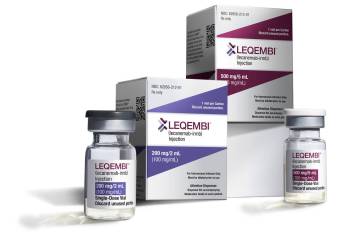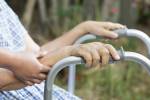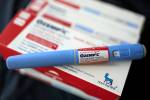Health screenings all women should know about
Moms are some of the most amazing people on our planet!! And it’s true for me that my mother is the most amazing woman I know. Like most women she has vast experience wearing lots of different hats from wife, mother, friend, doctor, researcher, businesswomen, philanthropist, volunteer, dragon-slayer, CEO of household, events coordinator, comfort food chef, knowledge engineer to hugs and kiss expert … the list goes on. I am honored to call her my mommy and salute the awesome life she lives with passion and purpose. I join with the millions and millions of children across our nation honoring the quintessential touch of mothers on this upcoming Mother’s Day.
As I have gained wisdom with age, I now see that in the process of juggling all those responsibilities, she, like so many other women we know and love, all too often put her own health on the back burner. So, with Mother’s Day approaching, I am sharing a two-part reminder about key health screening tests that can help protect these national treasures — our mothers, wives, sisters, daughters, girlfriends and ourselves — live longer and healthier lives.
Dr. Nina’s What You Need To Know: About Health Screenings Every Woman Should Undergo
Screening Mammograms
Why? In 2013, nearly 300,000 women had a new diagnosis and almost 40,000 women died from breast cancer.
What? Involves two x-ray images of each breast to detect breast cancer in women who have no signs or symptoms of the disease. They are capable of detecting tiny deposits of calcium that can indicate breast cancer as well as tumors that cannot be felt on a breast exam.
When? Recommendations differ between expert organizations. Speak with your doctor to determine if you should start screening earlier (age 40 versus age 50) based upon risk factors, or symptoms or changes in your breast.
How often? Recommendations differ between organizations; some recommend every year while others state every 2 years. Again, discuss with your doctor to determine what is best for you.
Breast Self-Exams
Why? It is estimated that approximately 40 percent of diagnosed breast cancers are detected because a woman felt a lump. And we know that early detection allows for more treatment options and has been shown to improve survival.
What? Using the pads of the fingers, women need to examine the breast and armpit in different positions. The National Breast Cancer Foundation contains excellent information on how to perform a good exam. In addition to lumps, if you experience breast pain, skin thickening, nipple discharge or a change in the size or shape of the breast, contact your healthcare provider.
When? In your 20’s. If you haven’t started yet, start today!
How often? Every month. Choose a day (e.g. the 1st or lucky number 7) and put it in your calendar.
Pap Smear And Pelvic Exams
Why? Prior to screening Pap smears, cervical cancer was the leading cause of cancer death in women in the U.S.! Although the number of cases and deaths from it have decreased, they are still too high: almost 12,000 newly diagnosed cases and nearly 4,000 deaths every year.
What? Your healthcare provider will attain cells from the opening of the cervix (lower part of the uterus). The cells are then examined under a microscope to look for indications of cancer (referred to as cytology). Although the description of the test may sound intimidating, don’t be hesitant. Choose a health care provider that you are comfortable with and focus on why it is so important to do.
When? New guidelines suggest starting screening after age 21 and continuing until age 65.
How often? Every 3 years. Women over the age of 30 years can increase the screening interval to every 5 years when cytology and human papillomavirus (HPV) testing are combined (known as co-testing). However, discuss with your health care provider if, based upon your sexual history and prior results, they recommend more frequent screening.
Fasting Blood Sugar
Why? Symptoms of diabetes and pre-diabetes come on slowly and may not be obvious. Diabetes can cause numerous issues including blindness, heart attacks, stroke, nerve damage and kidney failure. Early detection and appropriate management can decrease the chance of having these complications.
What? A fasting blood sample is drawn. We are considered normal if less than 100 mg/dL; Prediabetic if 100-125 mg/dL; and Diabetic if greater than 125 mg/dL.
When? Anyone older than age 45 should be screened. However, if you have a body mass index (BMI) greater than 25, hypertension, sedentary lifestyle, polycystic ovary syndrome, gestational diabetes, a personal history of heart disease or close relatives with diabetes, screening should be performed earlier, regardless of age.
How often? Every 3 years. If there are risk factors, your doctor may recommend more frequently.
Please join me this Mother’s Day in taking a pledge to lovingly remind the amazing women in our lives that their health needs to be at the top of their long list of things-to-do.
And it is true, that the gift of encouraging good health is not only the best gift we can give ourselves and the world – it helps our women as they reach for the stars … and continue to leap tall buildings on a single bound while planning that “next” event. Amazing. I am calling my mom now. Stay tuned to next week’s Part 2 of Health Screening Tests Every Woman Must Undergo.
This information is for educational purposes and should not be considered specific medical advice. Always consult with a qualified medical professional regarding your individual circumstances.
Dr. Nina Radcliff is dedicated to her profession, her patients and her community, at large. She is passionate about sharing wise preventive health measures. Contact her on Facebook or Twitter @drninaradcliff.




























